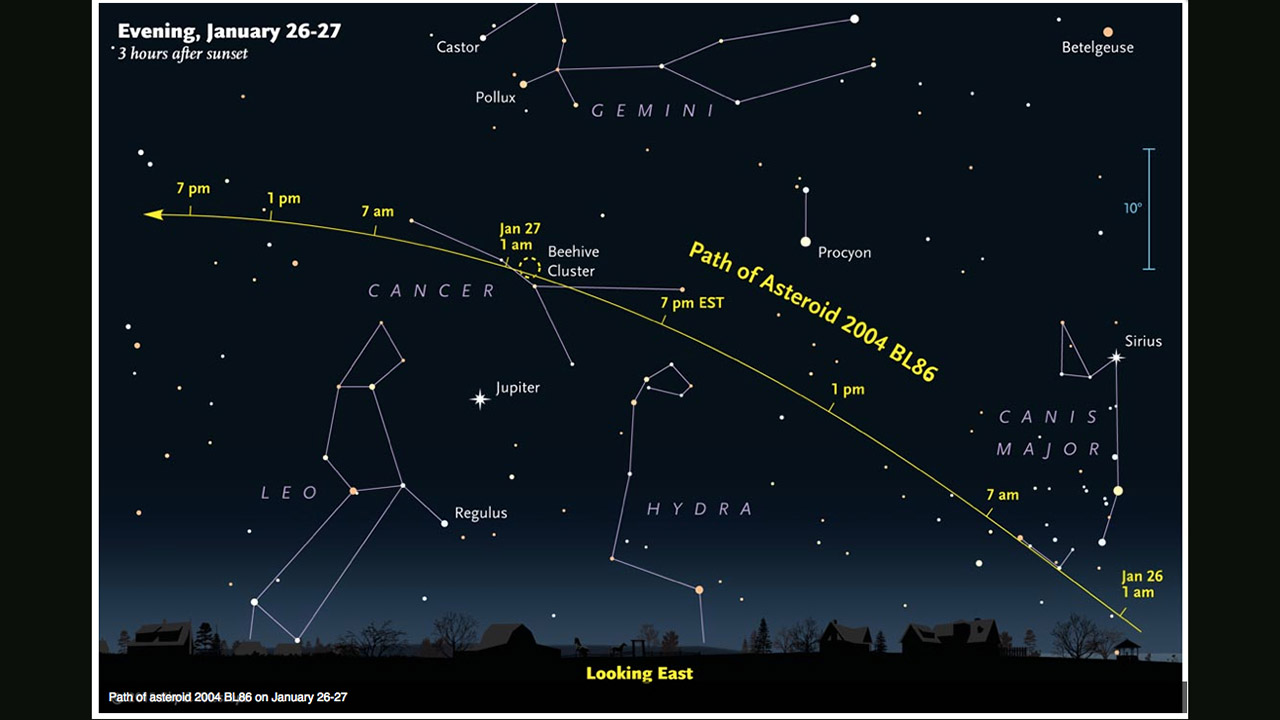While the East Coast hunkers down for a “historic” snowstorm, the rest of the world will have the opportunity to see an asteroid pass by Earth — the likes of which we haven’t seen since 2007.
Asteroid 2004 BL86 is “roughly a third of a mile across,” writes Space & Telescope, but not to fear:
By comparison, most near-Earth asteroids have diameters no larger than 50 to 100 feet. Fortunately, it is going by at a very safe distance of 745,000 miles (1.2 million km).
Observers may have caught a glimpse of it this morning around 11:19 AM EST, when the asteroid was its closest to Earth. However, according to the magazine, the asteroid will be better illuminated tonight: the best viewing times are between 8 PM and 1 AM EST.
The above map shows you its trajectory. If you know your stars, then “identify and lock onto a star along its path,” according to Sky & Telescope senior editor Kelly Beatty. “Then just watch at the time that the asteroid is predicted to pass by that particular star.”
The bad news is that you likely need a 3 to 4-inch telescope to see it. If you’re caught in the white out of the snow, or you don’t have a telescope, you can watch it on a livestream here.
(Image: NASA)



